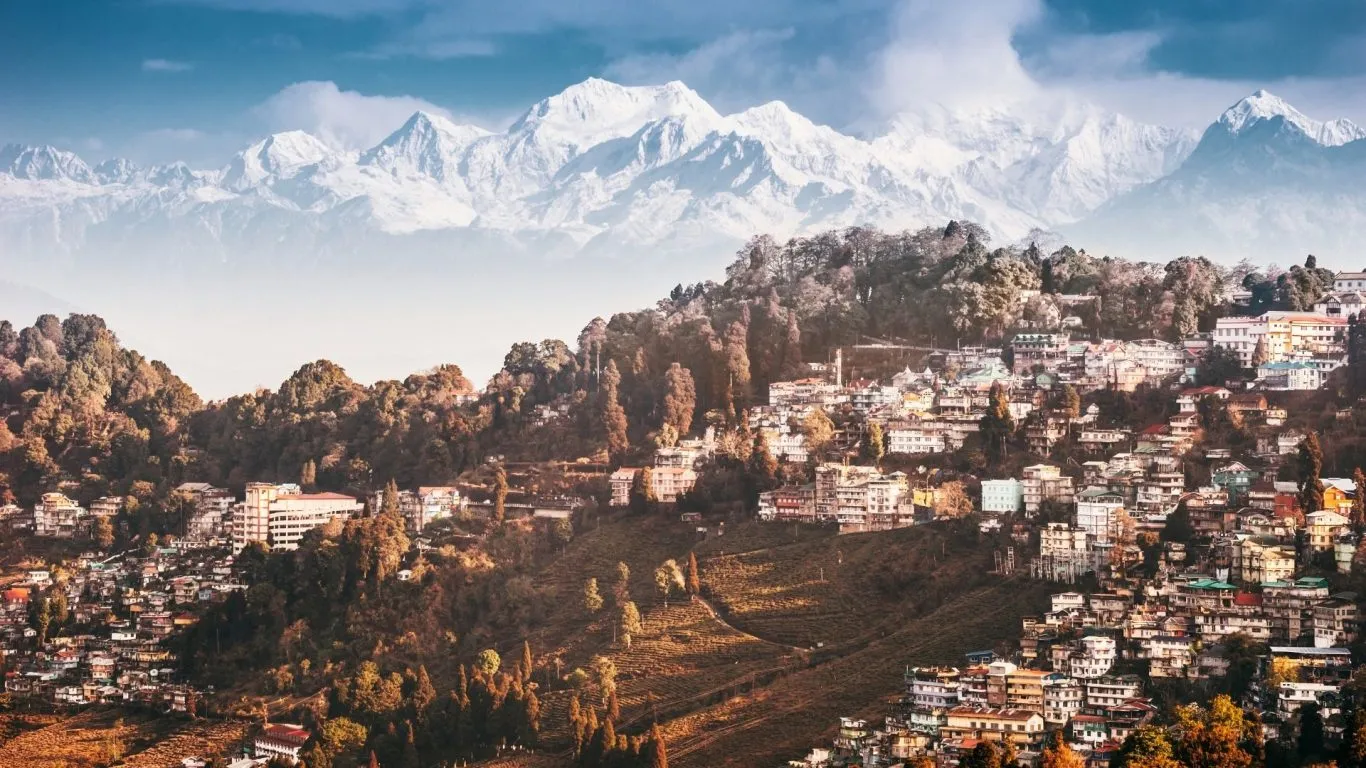AN ELGIN EXCLUSIVE FEATURE
“The Himalayas are a holy land, dotted with sacred lakes, divine peaks and blue glaciers that gleam and soar in the collective imagination of the sub-continent”
― Susan Jagannath, Chasing Himalayan Dreams.
The countless mysteries the Himalayas holds, there are few with unknown histories, believes and stories. Some places are hidden being the victim of underdevelopment and some are subdued under other renowned attractions. The few which managed the attention are the places surrounded by the majestic Himalayas.

Image by hdqwalls
A pure awestricken view of sunrays hitting the peak of The Great Himalayas depicting a gold- plated, precious phenomenon.
An Asian traveler, Jon Algie, explains his journey along the mountains within the mysterious hamlet, Kalpa, a small Himalayan village.
“I see a mountain in my way
It’s looming larger by the day
I see a darkness in my fate
I’ll drive my car without the brakes”
“That was a quote from the song “Mountain at My Gates” by Foals, and it kind of sums up my time in Kalpa. Upon looking out my window, or stepping on to the deck just outside it, I was greeted by a string of mountains so close I could almost touch them.” says Jon Algie.

Image by Anoop Negi, Flickr
In Kalpa, as the sun sets the Himalayan Mountain range comprising Kinnaur Kailash and Jorakanden continue to catch the sunlight at 21000 feet.
Kalpa is often used as a gateway town for tourists travelling to Spiti, a cold desert mountain valley, but it’s worth staying a few days to soak in the amazing mountain vistas and relax in this historic Himalayan hamlet.
Kalpa sprawls up a hill with houses, hotels, and temples. The hamlet has enough to keep you busy all day, even watching the everyday chores of commoners might indulge you for hours. The oldest cottages and temples are in lower Kalpa, whereas the majority of the hotels are on the hill above. The vistas are breathtaking from every angle. Locals wander through the stone streets and alleyways, and it’s lovely to sit for a while on the benches in the center of town and watch everyday life go by. Locals with traditional green and beige hats will frequently join you.

The drive itself to the so-called suicide point can increase heart rates to max capacity. The extremely narrow roads with shale mountains on one side threatening to engulf the road, and a steep precipice on the other, will definitely bring in a fear quotient in each and every visitor.
Choosing a clear day for hiking needs be the priority as the forest fires might shroud the sky in haze. The trek for The Suicide Point, near Kalpa, a place with dangerous trench and vertical slopes, would throw the spectacular views of the Kinnaur Kailash Range along the route, and the road drop-offs are far more pleasant to stroll along than drive past. The path surrounded by apple orchards and pine trees would make up for your courage and every scary slants. It’s basically just a graffiti-inscribed rock over a tremendous drop-off to the valley beneath. “I’m guessing people have died here but it didn’t seem much more dangerous than any other stretch of this treacherous group of Himalayan roads (the road to Chitkul being the worst)” explained Jon Algie.
High Himalayan lakes have always had an allure all their own. Something which, when perversely marketed and consumed, like in the case of Roopkund or Pangong, can destroy the ecology of the region. When handled wisely, however, they may give the ideal balance of exhilarating adventure and illusive stability, as in the instance of Jolingkong, one of the 4500+ high-altitude lakes of the Indian Himalayas. The clear waters mirror the majestic ‘Adi Kailash,’ or Old Kailash, one of Shiva’s mythological homes.

Image by Amit Sah, Flickr
The picturesque reflection of Adi-kailash in Jolingkong, the depiction is enough to appreciate the beauty of nature.
The route to Jolingkong carries you through the Byans Valley village of Kuthi, where you must stay with the locals and listen to their rendition of the Mahabharata. After all, Vyasa wrote it here. And remember to not miss out on the kuttu ki roti, a healthy native grain that will soon be available on New York’s main streets.
The initial half of this journey follows the traditional Kailash Mansarovar Yatra route, which pilgrims have followed for generations. Prepare to whisked away in the ecstasy of ‘har har Mahadev.’

Image by Sathis Ragavendran, Flickr
The Hidimba Temple is an ancient cave temple dedicated to Hidimbi Devi, sister of Hidimba, a figure in the Indian epic Mahabharata. The temple is surrounded by a cedar forest at the foot of the Himālayas. The sanctuary is built over a huge rock jutting out of the ground which was worshipped as an image of the deity. The structure was built in 1553.
Walk upward from Manali’s Hadimba temple, over a corner, and you’re in another universe, already learnt two lessons. One, how breathtakingly gorgeous Manali is, and two, how unadventurous its fifteen thousand daily tourists are (during May to June at least).
And even if you’re in August, you’ll immediately be recognized as a connoisseur of the undiscovered Himalayas, and you haven’t even broken a sweat yet. Make your way through grass taller than you, countless flowers beneath your feet, clouds drifting underneath and above you, and your eyes decoding hues of green it never thought existed. The journey takes you beyond the tree line and into a wonderful fantasy realm as you pass the Khan Pari Pass (try to figure out why it’s called that) and the Rani Sui Lake (the queen bathed here). The snows of the Bara Banghal and Pir Panjal ranges peek through the clouds.





